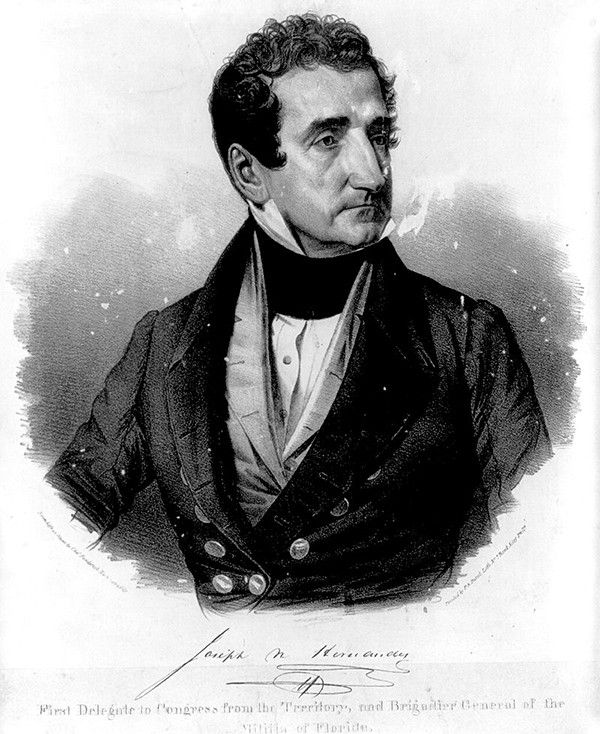In Memphis, we’re all pretty familiar with this one question. It’s an ice-breaker question we’re all guilty of pulling out when we first meet someone. It helps us place them in the vast landscape of the city, and it’s often the first question we ask: So, where’d you go to school?
For me, that was usually the second question I got, right after “Where are you from?” If my answer — “Memphis” — didn’t satisfy their curiosity, they followed up with “Well, where are your parents from?” if not the more blatant “Where are you really from?”
Years ago, I would be stumped by this interrogation. I’d ask myself if Memphis wasn’t the right answer, then what was? I felt that I knew the ins and outs of Memphis. I knew what streets to avoid during rush hour, when to move lanes in advance to avoid certain pot holes, and where to go for a late-night pizza run. I was the human Google Maps of Memphis.

Joseph Hernández
Despite the fact that I regard Memphis as my hometown, people asked (and continue to ask) these questions because they are trying to place me somewhere.
Where are you really from? It seems like they are trying to place me anywhere but, apparently, Memphis. To them, I don’t fit their idea of what a Memphian looks like, and I’m not the only one. There are many folks from various cultural and linguistic backgrounds who don’t neatly fit within the U.S. black and white racial binary boxes. This is not necessarily a reflection of change. Rather, this is a reflection of how these boxes that were constructed have never fit the complex reality of people. This results in an assumption that just because someone fits within this fabricated box, they and everyone else in that box share the same experience.
I was reminded of this while I toured “Black Out: Silhouettes Then and Now,” a current exhibition at the Mississippi Museum of Art. The exhibit has silhouettes from the late 18th-century to the recent works of Kara Walker, Camille Utterback, and Kumi Yamashita. Many pieces were from prominent 19th-century artist Auguste Edouart. As I walked through his surviving collection of silhouettes, one name caught my attention: Joseph Marion Hernández. The label read “Joseph Marion Hernández was Florida’s first delegate to the House of Representatives and the first Hispanic member of Congress.”
A gallery attendant shared that he was surprised to learn that back in 1822, a Hispanic man was an elected representative. Big win for representation, right? Well, a lot of people thought so, too. I found that today Hernández’s tenure in Congress is celebrated as a bold move toward diversity. Multiple articles and books memorialize him as the first Hispanic (some even say “Latino”) member of Congress, especially during Hispanic Heritage Month.
This is where it gets tricky. One may think that because I have a Spanish-language last name and I speak Spanish that I would be excited to see Hernández, supposedly “someone like me,” up there. In actuality, I have very little, if anything, in common with him.
Hernández’s parents originally came to what is now Florida as indentured servants from Menorca, an island of Spain. They later accumulated land, owned plantations, and depended on labor from enslaved black people to build their wealth. Born in the then-Spanish colony of Florida, Hernández built on that capital, marrying a wealthy widow and expanding his sugar cane and cotton plantations. He owned, according to one estimate, as many as 150 enslaved black people. Other estimates suggest several hundred enslaved people worked his plantations.
When Florida became a U.S. territory, Hernández dropped Spain and pledged his allegiance to the U.S. As a wealthy, land-and-slave-owning man, why wouldn’t he? He controlled over 25,000 acres of land. This man was not about to pick up and go anywhere. Through the Spanish Land Grants and later as a member of Congress, he was able to keep and advocate for his land and power.
Hernández’s advocacy came in the form of advancing slavery and supporting the forced removal of the Seminoles. Hernández and the slavery-reliant U.S. economy also felt threatened by indigenous and black people organizing against settlers. Seminoles resisted their removal. Along with enslaved black people escaping slavery, they destroyed several plantations including one of Hernández’s. He spent his last years in yet another sugar plantation, one his family owned in Cuba.
I do not celebrate Joseph Marion Hernández. He was a land-grabbing Spanish plantation owner who sought wealth through the enslavement of black people not only in the U.S. but also Latin America. He acted only to preserve his land, wealth, and power. This is why context matters. Without it, we mindlessly celebrate him as the supposed pillar of representation and diversity.
When we ask, or asked, what school someone went to, what we are subconsciously doing is trying to frame how to understand each other. But sometimes that framing itself is distorted from the beginning. It’s true we can find some comfort in knowing where someone went to school because we can try to pinpoint immediate similarities and differences. We know that there are differences between public and private schools and even between public schools; however, there are different experiences within a single public school. What we then learn is the name of their school and not how they navigated through it.
It’s not until we peel back the layers that we understand those experiences. It’s not until we look through our critical eyes that we understand how important and complex context can be.
Aylen Mercado is a brown, queer, Latinx chingona and Memphian pursuing an Urban Studies and Latin American and Latinx Studies degree at Rhodes College.